Circuit-Zone.com - Electronic Projects
Posted on Monday, December 19, 2011 • Category: PIC

Here is 0 to 99 minutes relay timer using PIC16F628 microcontroller and 16 character LCD display. The microcontroller is PIC16F628A running at 4.0 MHz clock using an external crystal. An HD44780 based 16×2 character LCD is the main display unit of the project where you can watch and set the timer duration using tact switch inputs. There are three tact switches connected to RB0 (Start/Stop), RB1 (Unit), and RB2 (Ten) pins. You can select the timer interval from 0-99 min using Unit and Ten minute switches. The Start/Stop switch is for toggling the timer ON and OFF. When the timer gets ON, a logic high signal appears on the RA3 pin, which can be used to switch on a Relay. The circuit diagram of this project is described below.
Posted on Thursday, July 14, 2011 • Category: PIC
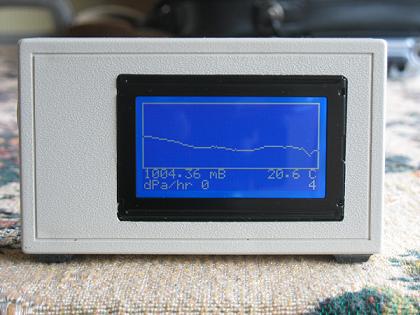 Here's a digital barometer that uses Atmega8 microcontroller and graphical LCD display. This project uses SCP barometer pressure sensor graphical LCD display connected to Atmega8 microcontroller. Graphical LCD displays latest 128 readings while one reading occur once in 20 minutes. You can see information of about two last days. Provided C source code can be customized to your liking.
Posted on Thursday, July 14, 2011 • Category: PIC
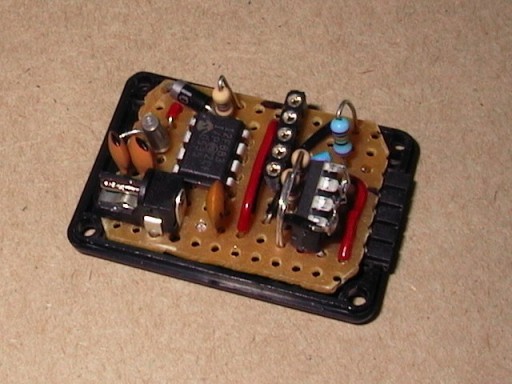 This project uses a Microchip PIC microcontroller, a serial EEPROM and a thermistor to create a temperature recorder.
The temperature is measured and stored at user programmable intervals; this can be from 1 second to 256 seconds. The time interval is set by programming it and the start time into the EEPROM.
Most of the time the PIC will be asleep and the EEPROM IC is inactive. This gives a very low current consumption of approximately 50 uA or about 1 mAh per day.
The EEPROM used is 32kBytes which can store up to 32,000 measurements. This could be one measurement every 30 seconds for 11 days for example.
The combination of thermistor and analogue circuit gives a range of between about -40 °C and +100 °C although the linear range is between about -10 °C and +40 °C.
Posted on Saturday, June 18, 2011 • Category: PIC
 A bootloader enables download of hex-files directly into the flash-memory of a PIC or other microcontroller. The bootloader receives the user program via the PIC's UART and writes it directly to the program memory (self programming). This feature greatly speeds up the development process, because the chip remains in the target circuit and need not be moved between the target circuit and the programmer.
When no bootloader is installed, all memory in the PIC can be utilized for user programs. That is 4 K for the 16F873 (0x000 to 0xFFF). Installing a bootloader means, that some part of the memory is occupied by the bootloader. The user can download his program into the remaining memory space. The bootloader in figure 1 occupy 256 words (0xF00 to 0xFFF), that is 6 % of the memory in a 16F873. The disadvantage of loosing 6 % memory is little compared to the advantage of fast program download and more friendly development routines.
Posted on Thursday, June 9, 2011 • Category: PIC
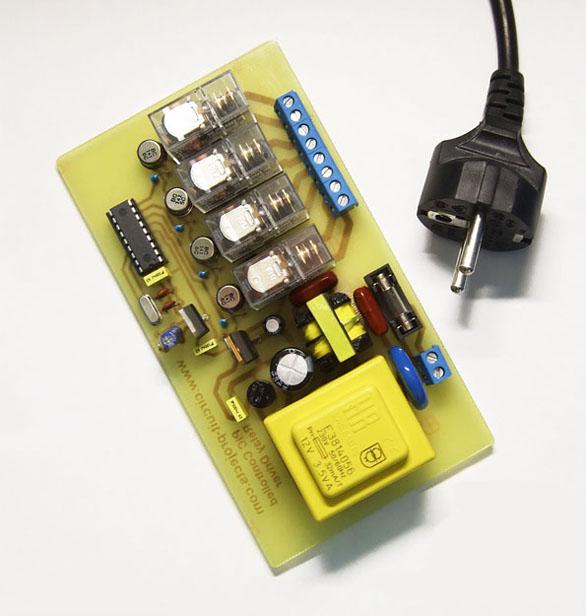 We love to read emails from our visitors, Please let us know by clicking here if you find any kind of bug/error in our site. We will fix it as soon as possible.
PIC Controlled Relay Driver
This circuit is a relay driver that is based on a PIC16F84A microcontroller. The board includes four relays so this lets us to control four distinct electrical devices. The controlled device may be a heater, a lamp, a computer or a motor. To use this board in the industrial area, the supply part is designed more attentively. To minimize the effects of the ac line noises, a 1:1 line filter transformer is used.
Posted on Friday, May 20, 2011 • Category: PIC
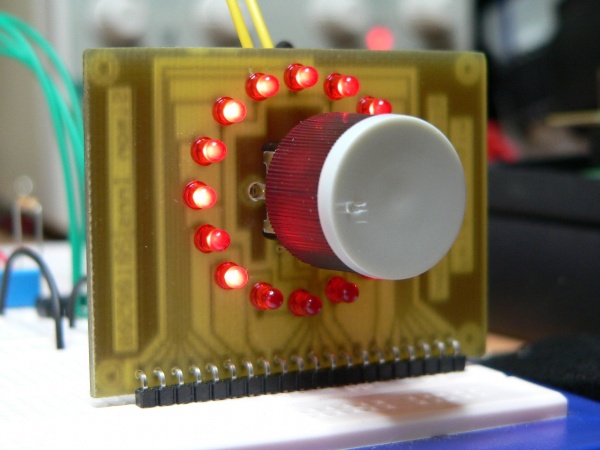 Rotary encoders are very versatile input devices for microcontroller projects. They are like potentiometers expect of digital nature and unlike analogue potentiometers they never wear down. Rotary encoders not only provide 360 degrees of rotational freedom they also allow digital positioning information to be gained without the use of analogue to digital converters (ADCs). When using rotational encoders in projects it's possible to use the same encoder to represent a number of different input types, however this requires some form of feedback display to let the user know what information he is inputting and the 'position' of the encoder. The project is based around a 24 position rotary encoder, 16 LEDs arranged in a circle around the encoder, an A6276 16 LED serial driver IC and the PIC182550 microcontroller. A rotary encoder has 3 pins usually called A, B and C. The C pin (which is normally the centre pin) should be grounded and both A and B should be connected to the microcontroller with individual pull-up resistors on each input. In this project I used RB4 and RB5 on the PIC to connect the encoder; this has 2 advantages, firstly you can use the PORTB internal weak pull-up (which means you do not need external resistors) and also the PIC provides an 'interrupt-on-change' which can be used to monitor the encoder.
Posted on Friday, February 18, 2011 • Category: PIC
 For a long time I needed a good programmer pussy, even if it is programming, so from time to time the application gets where it is used. So I decided to build the programmer. I chose between a couple of projects from different authors, but eventually won PICkit2. Microchip released the schema directly in the user manual for the programmer. On the Internet there are multiple versions of the programmer, it's usually cropped version of the log analyzer features, UART terminal, etc., 12V inverter is a modified version of it and control the MOSFETs, unlike bipolar transistors used in the original design. And it also showed that becomes due to the switching inductance feta leave. Finally, I chose to use the original scheme, although it is quite complicated and the parts used in our country can not normally buy, but my problems with finding parts easily solved. I bought a transistor, the 16F2550 PIC and a few other things, resistors and fry the rest I bought from "us". The price is pretty high, unfortunately, moving it around and 600CZK, the main prize and two processor makes the EEPROM. Below we describe the involvement and put into operation.
Posted on Friday, January 7, 2011 • Category: PIC
 USB Input / Output Board is a spectacular little development board / parallel port replacement featuring PIC18F2455 / PIC18F2550 microcontroller. USB IO Board is compatibile with Windows / Mac OSX / Linux computers. When attached to Windows IO board will show up as RS232 COM port. You can control 16 individual microcontroller I/O pins by sending simple serial commands. USB Input / Output Board is self-powered by USB port and can provide up to 500mA for electronic projects.
Posted on Friday, December 17, 2010 • Category: PIC
 One morning I woke up and wanted to know what the temperature outside was, and instead of running over to Home Depot and picking up a $2.00 glass thermometer, I decided to build my own wireless temperature sensor. At the heart of the board is a PIC12F675 microcontroller in an SO8 package. The right-hand side of the board houses the linear power supply (LP2950), bottom-center is the DS18B20 1-Wire temperature sensor, and out in left-field you can see the Sure TTL Bluetooth Module.
Posted on Wednesday, December 15, 2010 • Category: PIC
 The new PIC18F2550 Project Board was designed as the development platform for student projects. The board platform is suitable for developing the microcontroller based instrumentation. Students may build the signal conditioning board, plugs it to PIC project board, develops the code and programs it with loader cable easily.
Posted on Saturday, December 4, 2010 • Category: PIC
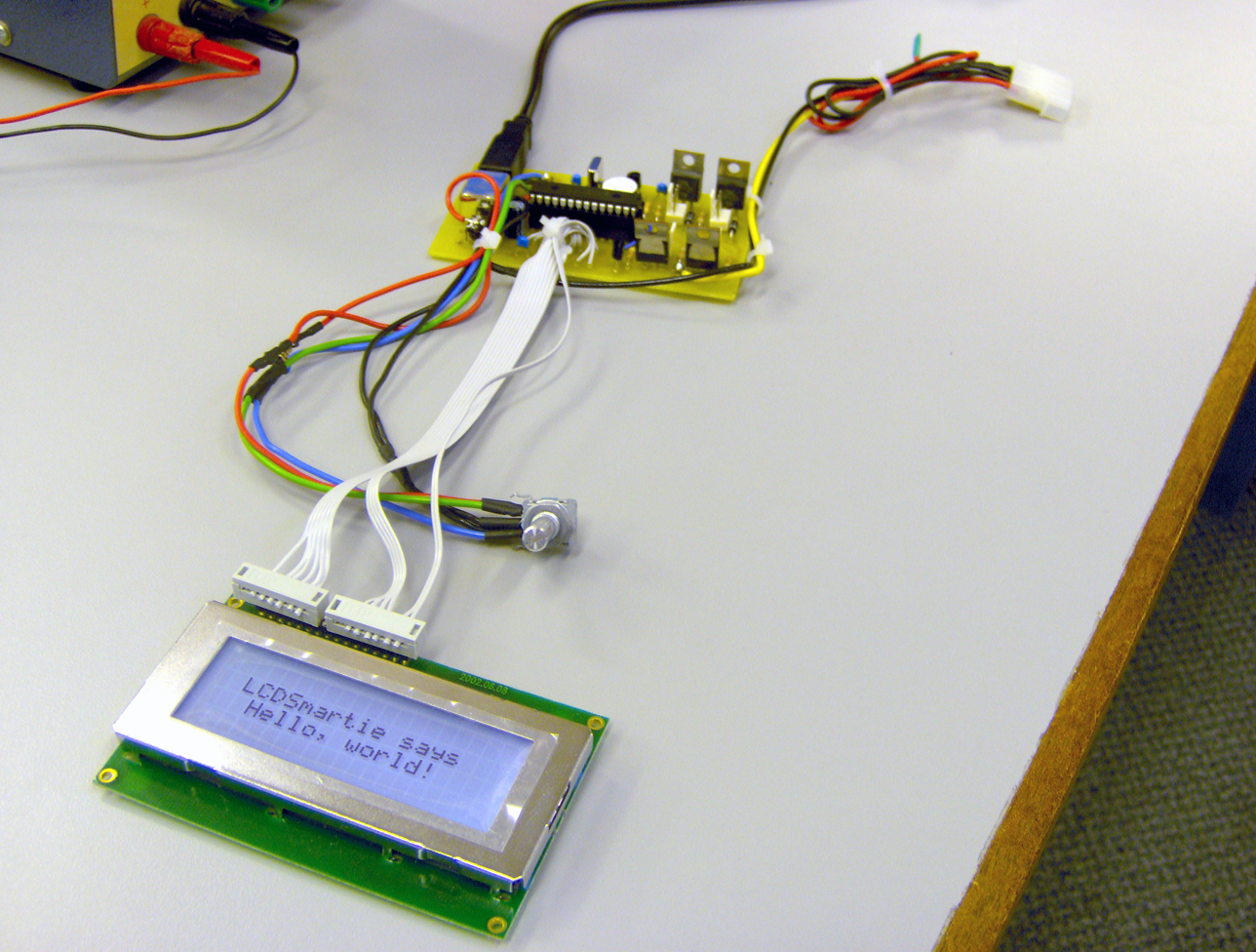 If you like PC modding this is cool project for you.this is an USB interface for alphanumeric LCD display like 4x20 which can be controlled with LCDSmartie program.USB interface is implemented by using PIC18F2550 microcontroller. Using USB LCD module you can view many types of information taken from PC like temperatures, time/date, MP3 song titles, view emails, RSS feeds all that LCDSmartie or other program supports.
Posted on Friday, December 3, 2010 • Category: PIC
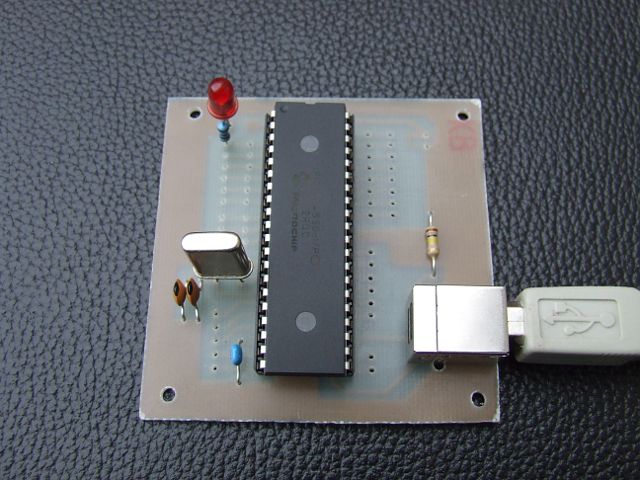 Pinguino is an Arduino-like board based on a PIC Microcontroller. The goal of this project is to build an integrated IDE easy to use on LINUX, WINDOWS and MAC OS X. This is a simple 40 pin PIC development board as described in RadCom for November 2009. It is designed for a PIC18F4550, but it will work with other 40 pin PICs like the PIC16F877A. It has no bells & whistles attached. No buttons, LED, LCD ICSP etc. All of the PIC pins are easily accessible so that you can add any features you need. This board has been tested with the Vasco PUF and the Pinguino USB bootloaders.
Posted on Sunday, May 2, 2010 • Category: PIC
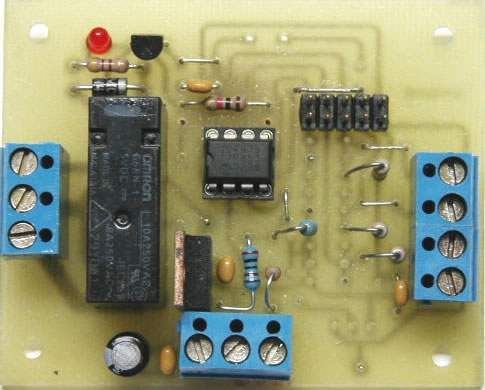 This project uses the 12F675, it was chosen because of its low cost, A/D convertor and flash memory. This security system was designed to be used in a simple installation with just a hidden switch and not a keyboard. There are several features such as a battery monitor built into the code that also make it good for remote locations just run off a battery. Also all the delays and and other parameters are put into flash memory just by using a visual basic program and the serial port of a PC.
Posted on Thursday, April 29, 2010 • Category: PIC
 This is a digital thermometer based on USB PIC16C745 microcontroller from Microchip and DS1820 sensor from Dallas Semiconductor. Temperature readings are sent over USB port in HIDCOMM USB mode to VB6 program on a PC. Hex program and sample Visual Basic 6 application is included.
Posted on Thursday, April 29, 2010 • Category: PIC
 Circuit measures the temperature and ambient brightness of the surrounding environment at the location it is placed. The data from the ADC is the calculated and displayed on the LCD. The main CPU unit on board the device is the PIC16F873.
Posted on Wednesday, April 28, 2010 • Category: PIC
 Manji broj proizvođača proizvodi IC kola za USB podršku. Najpoznatiji su: Cypress Semiconductor, FTDI, Philips i drugi. Microchip je 2000 godine proizveo mikrokontrolere PIC16C745 i PIC16C675 koji su imali podršku za USB komunikaciju i tako se pridružio ostalim proizvođačima. Ovi mikrokontroleri podržavaju USB 1.1 standarad, odnosno USB sa brzinama rada do 1.5 MBs. Nova serija Microchip-ovih mikrokontrolera urađenja u flash tehnologiji PIC18F2445/2550/4455/4550 je podržala USB 2.0 standrad. Ovo su moćni mikrokontroleri sa brzinama takta i preko 40Mhz i veličinom programske memorije od 32K reči. O stanadardima za USB možete na sajtu http://www.usb.org. Upravo na ovim mikrokontrolerima urađen je interfejs sa USB komunikacijom.
Posted on Tuesday, April 27, 2010 • Category: PIC
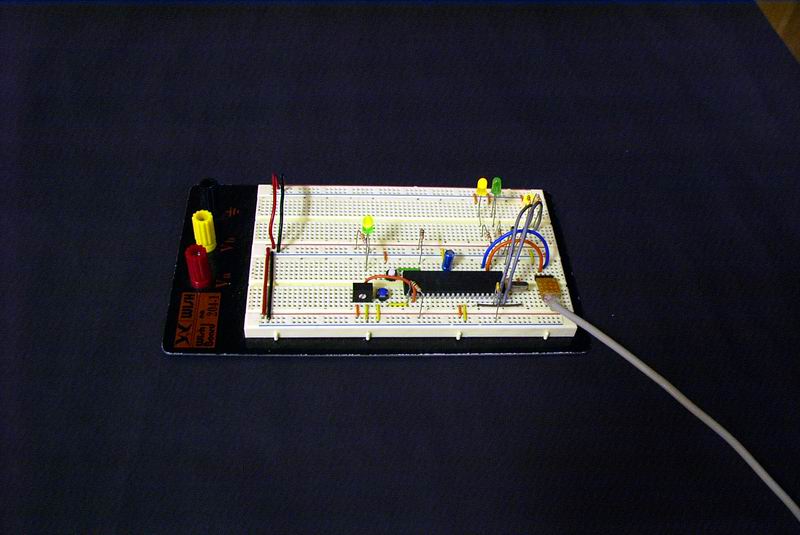 When the device is connected to the computer, a Virtual COM Port (VCP) will be created. This is shown at the Device Manager Window under Ports(COM & LPT). In this case, COM5 was created when the PIC18F4550 was attached to the USB Port. It may be interesting to note that if you plug in your PIC in different USB ports, the VCP created will be different.
Posted on Tuesday, April 27, 2010 • Category: PIC
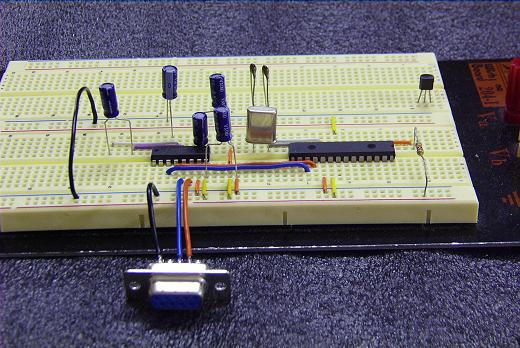 The quickest way to display something is probably sending the data to the computer to be displayed on the monitor. One of the ways to do this is to use the USART module on board the PIC Microcontroller by making use of the pins RC6 and RC7 which is also the TX and RX pins respectively when the SPEN bit on the RCSTA register is set.
Posted on Wednesday, April 21, 2010 • Category: PIC
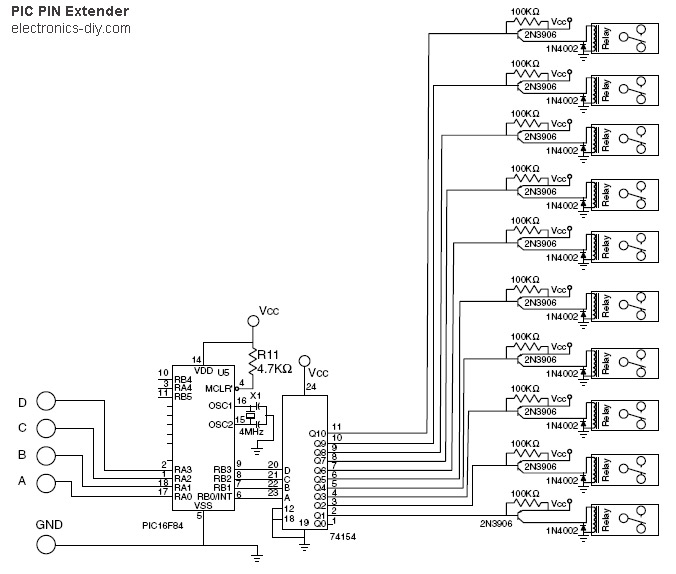 This circuit based around 74LS154 will extend PIC / AVR microcontroller output PINs from 4 to up to 16. It can also be used for extending parallel port output pins.
Posted on Wednesday, April 21, 2010 • Category: PIC
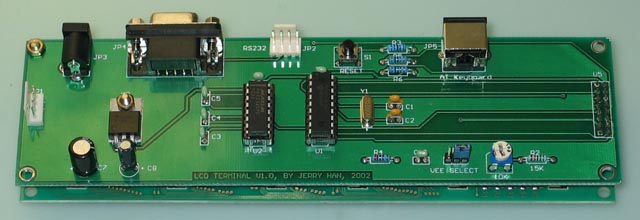 The LCD Terminal just like a normal terminal, it can connect to any host via RS-232 serial cable. A PC keyboard must connect to it as the input device and what ever you type will send to host via RS-232 and display on a 40x4 LCD.
Data receive from host can also display on the LCD unit.
You can use this device as any Unix/Linux machine's console.
Posted on Wednesday, April 21, 2010 • Category: PIC
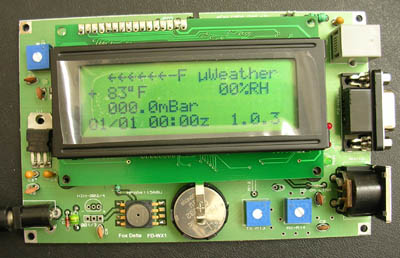 Weather Station is PIC16F877A based and has a 4x20 LCD, a data logger output and accepts 1Wire wind instrument. It has a built-in APRS TNC. Connect it to your portable rig thru a DIN5 connector and you have a true portable weather station.
Posted on Wednesday, April 21, 2010 • Category: PIC
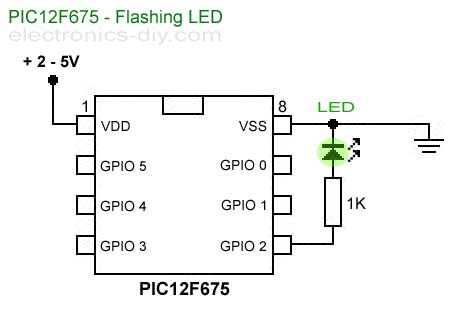 Simple little circuit for testing PIC12F675 microcontroller. When you start learning a programming language like C++, Visual Basic or any other language your first step is to write a program that displays "Hello World" on a computer's monitor. When you start learning how to program PIC microcontrollers an equivalent to that is blinking a LED.
Posted on Monday, April 19, 2010 • Category: PIC
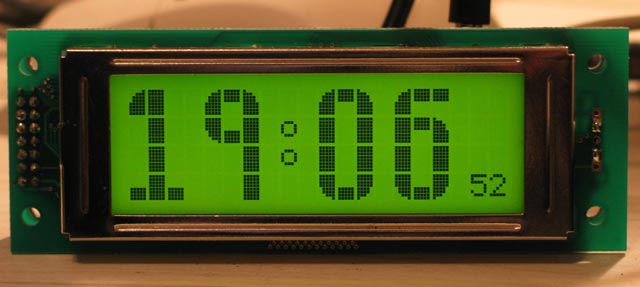 Serial LCD/VFD Controller is a HD44870 based LCD/VFD controller via RS-232. The control command is compatible with Matrix-Orbital's LCD module.
So, you can use any MO friendly software to control this baby such as LCDC.
Posted on Monday, April 19, 2010 • Category: PIC
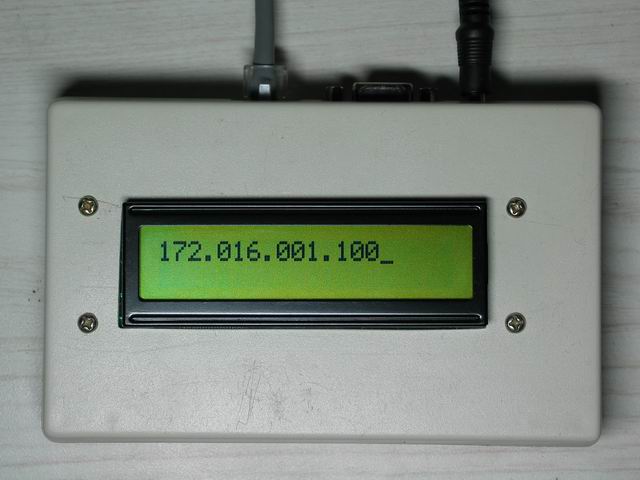 PICNIC is a project to add 10BaseT Ethernet controller to PIC17F877, and it can run as an network-enable device.
This project is based on tristate's PICNIC product. And I just change the temperature sensor's circuits to improve the precision on A/D convert and add another Temp-Sensor channel.
Posted on Friday, April 16, 2010 • Category: PIC
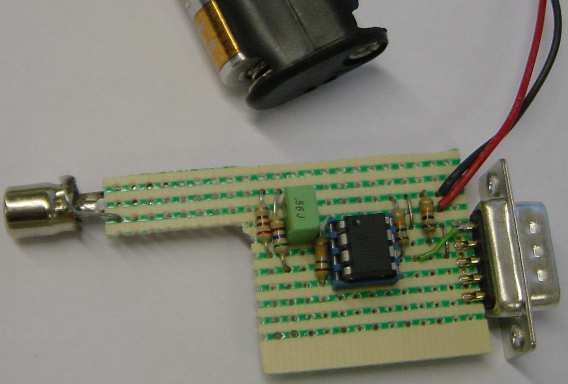 This project is based on ideas from Rickard's electronic projects page and David B. Thomas VCR Pong. However, I have developed the simplicity even further, eliminating most of the external components. Using microcontrollers with internal 4MHz clock generator there is no need for the xtal. The 12f675 part also operates on wide voltage range, and the regulator can be removed.
For game controller, I plan on using the old Commodore 64 style paddless. They include firing buttons, which I plan on using as power switch and game reset. 16F675 has a low power sleep mode with 1nA current consumption, so I plan on using that to switch off.
Posted on Monday, April 12, 2010 • Category: PIC
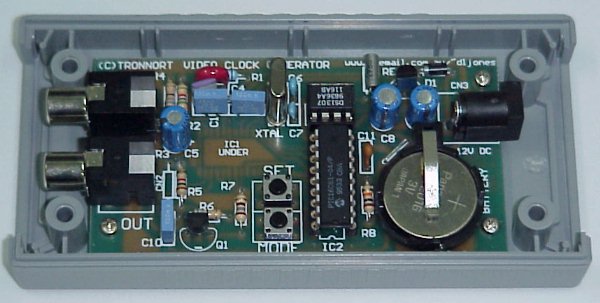 Perfect low cost solution for: * New video security
installations * SSTV transmitters * Amateur video * Existing installed security installations * Scientific experimentation monitoring * and any other application that needs the time and date recorded on an image!
Posted on Saturday, April 10, 2010 • Category: PIC
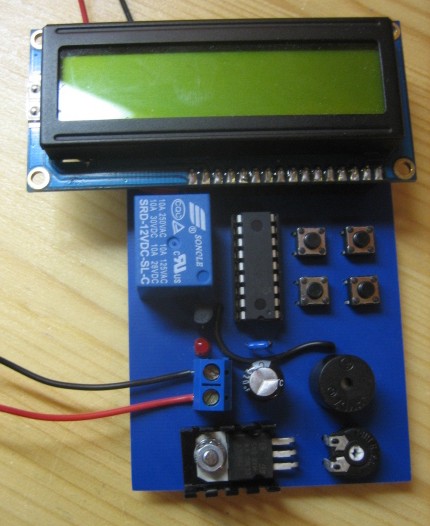 If you need an UV LED timer, or a timer for any other purpose you may be interested in the UV LED Controller that was constructed using a PIC 16F628A Microcontroller. There is a schematic and code available however the original project was not documented in English. Have a look at the Google translation that did a decent job of translating this one.
Posted on Saturday, April 10, 2010 • Category: PIC
 The new PIC18F2550 Project Board was designed as the development platform for student projects. The board features MCU: PIC18F2550 with external xtal, ADC: one channel 0-2.5V sigma-delta converter, Linear Technology LTC2400/LTC2420, 6-channal 10-bit ADC 0-5V, Display: Two connectors for text LCD or GLCD, USB: onchip USB port with type B connector, Power supply: onboard low dropout regulator, rechargeable battery, Code programming: 10-pin header for In Circuit Loader. The board platform is suitable for developing the microcontroller based instrumentation. Students may build the signal conditioning board, plugs it to PIC project board, develops the code and programs it with loader cable easily.
Posted on Tuesday, March 30, 2010 • Category: PIC
 PICKit 2 Starter Kit is the low cost ICSP programmer for Flash PICs with USB interface introduced recently by Microchip. Only subset of PIC microcontrollers is supported, but the list is including all the recent devices from PIC16 and PIC18 families. The software upgrades are free and Microchip updates them in timely fashion. Even more, the source code and schematic are freely available.
Posted on Tuesday, March 30, 2010 • Category: PIC
 JDM2 PIC 18F Programmer is programmer based on JDM design which takes all necessary signals and power supply from RS232 serial port. It supports 8, 18, 28 and 40 pin PIC microcontrollers which allow serial programming and I2C EEPROM memories. Programmer comes with ICSP cable for direct connection to prototype boards. The supported devices depend on the current version of ICPROG software. JDM2 programmer is supported by ICProg, PICPgm and WinPic PIC programming software
.
Posted on Tuesday, March 30, 2010 • Category: PIC
 The PIC programmer project presented here is intended to be used by more experienced developers who already have access to a simple PIC programmer, because the programmer hardware is built around one 16F627(A) or 16F628(A) microcontroller that has to be preprogrammed with firmware. The presented solution uses PC's serial port for reliable communication between the programming software and 'intelligent' PIC programmer hardware.
Posted on Tuesday, March 30, 2010 • Category: PIC
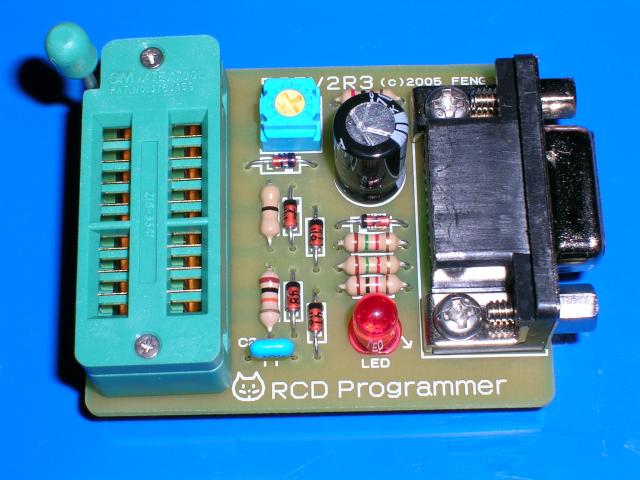 I believe that the "JDM Programmer" is cheap and very useful PIC Programmer. However, since "JDM Programmer" cannot control VDD, the algorithm "VPP before VDD" is inapplicable. Programming to the latest device from this reason may go wrong when using CONFIG settings as "Internal oscillator" "MCLR OFF". These devices are given power from the "JDM programmer",and execute program code. An error may come out by verification, or it may become impossible erasure and become impossible re-programming . In order to solve this problem, I designed a programmer based on the "JDM programmer." Since this programmer was made of resistors, capacitors, and diodes, I named this the "RCD Programmer." "Hardware settings" of IC-Prog are the same as the "JDM programmer."
Posted on Tuesday, March 30, 2010 • Category: PIC
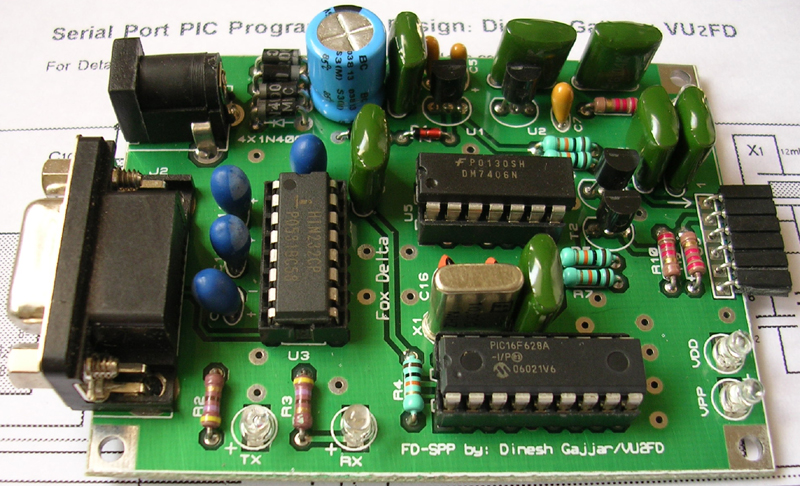 PIC Programmer is an essential tool if you wish to learn or build projects with Microchip PIC Micro Processors. This serial programmer is for those who do not have a Parallel Port on their PC. Programmer may be used with PIC PROGRAMMER Professional Serial programming software from Oshosoft or other serial programming software.
Posted on Friday, March 19, 2010 • Category: PIC
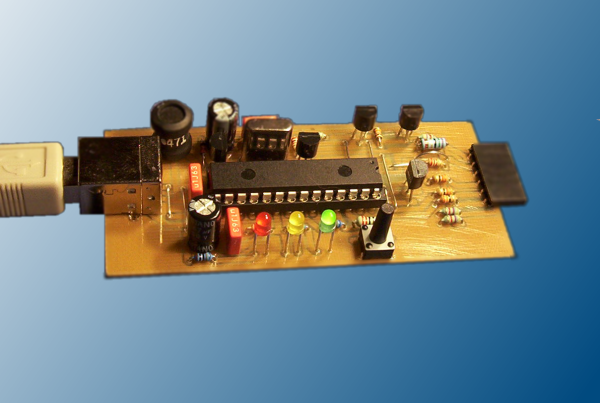 This is a PICkit 2 MPLAB compatibile Programmer. It is a low-cost development tool with an easy to use interface for programming and debugging Microchip’s Flash families of microcontrollers. The full featured Windows programming interface supports baseline (PIC10F, PIC12F5xx, PIC16F5xx), midrange (PIC12F6xx, PIC16F), PIC18F, PIC24, dsPIC30, dsPIC33, and PIC32 families of 8-bit, 16-bit, and 32-bit microcontrollers, and many Microchip Serial EEPROM products. With Microchip’s powerful MPLAB Integrated Development Environment
(IDE) the PICkit 2 enables in-circuit debugging on most PIC microcontrollers. In-Circuit-Debugging runs, halts and single steps the program while the PIC microcontroller is embedded in the application
. When halted at a breakpoint, the file registers can be examined and modified.
Posted on Saturday, October 31, 2009 • Category: PIC
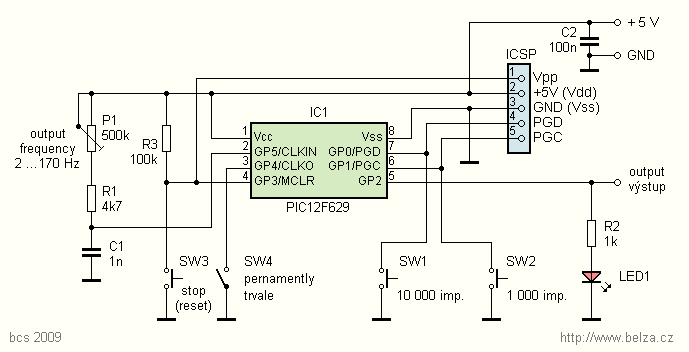 Circuit is very simple. The generator uses a PIC12F629 microcontroller with clock frequency set by an external RC. Output frequency can be set trimmer P1 in the range of about 2 to 170 Hz. Oscillator frequency can be adjusted if you change C1 capacitance. Pulses are generated with a period of 200 Tcy. All pulses are of equal length. Output frequency is 800 times lower than the frequency of the oscillator.
Posted on Tuesday, December 2, 2008 • Category: PIC
Build your own LC Meter and start making your own coils and inductors. This LC Meter allows to measure incredibly small inductances making it perfect tool for making all types of RF coils. LC Meter can measure inductances starting from 10nH - 1000nH, 1uH - 1000uH, 1mH - 100mH and capacitances from 0.1pF up to 900nF. The circuit includes an auto ranging and "Zero Out" function to make sure the readings are as accurate as possible ...
Posted on Saturday, April 5, 2008 • Category: PIC
Developed specifically for programming of PIC 18F2550 micro controllers, this parallel port, no-power, programmer is the smallest of all programmers ever built. A DB25 Male Connector, one capacitor and a resistor makes this Port Powered programmer. Programmer takes its power from Parallel Port pins 2-9. VPP for this programmer is 5V and hence "LVP" must be selected in programming software.
Circuit-Zone.com © 2007-2025. All Rights Reserved.
|